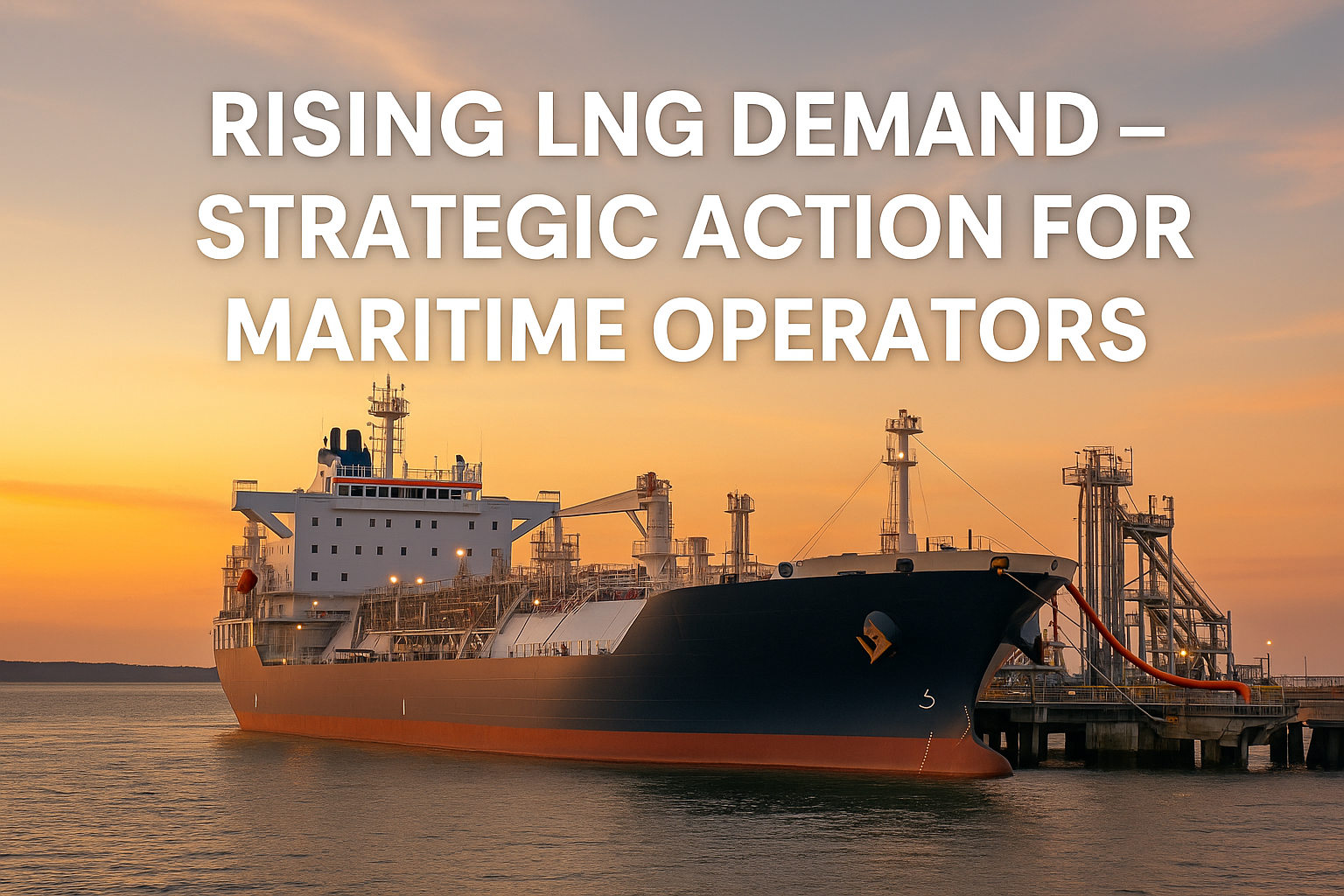Recently LNG demand maritime fuel adoption surged to the forefront of industry headlines. A Reuters analysis on October 2 reported that global demand for LNG as a marine fuel is expected to at least double by 2030, driven by tightening emissions rules and rapid infrastructure expansion.
While this shift represents progress toward decarbonization, it also introduces a complex matrix of challenges for shipowners and operators—from infrastructure gaps to asset-investment risk. Those who prepare now will gain an operational and compliance advantage; those who delay risk being stranded amid shifting regulations and rising costs.
This post explores the underlying pressures behind the LNG surge and provides a structured roadmap for how maritime operators can adapt strategically.
The Problem: Navigating Uncertainty in the LNG Transition
1. Regulatory Acceleration and Compliance Complexity
The International Maritime Organization’s Net-Zero Framework, FuelEU Maritime regulations, and regional carbon pricing mechanisms are driving a fast transition to lower-carbon fuels. For many operators, LNG is positioned as the “bridge fuel” that can deliver meaningful reductions in CO₂ and SOx emissions without a full fleet overhaul.
However, compliance timelines are tightening, and ambiguity remains over LNG’s long-term acceptance as a sustainable solution. Decisions made now will determine whether vessels remain compliant beyond 2030. IMO press release on Net-Zero regulations
2. Infrastructure and Bunkering Limitations
Although LNG bunkering has expanded in hubs such as Singapore, Rotterdam, and Shanghai, global coverage is still patchy. Vessels operating on less-serviced routes may face logistical risk—fueling detours, delays, or the need to revert to conventional fuel in certain regions.
3. Price Volatility and Fuel Supply Risk
The LNG market remains sensitive to global energy dynamics. Competing demand from power and industrial sectors means marine fuel pricing can fluctuate sharply. Without adequate hedging, operators may face unpredictable cost swings that erode margins.
4. Stranded-Asset and Capital Risk
The industry’s ultimate trajectory toward zero-carbon fuels (hydrogen, ammonia, methanol) means early LNG adopters must plan carefully. A fleet over-committed to LNG could face obsolescence before realizing ROI, particularly if stricter lifecycle-emission standards render LNG less favorable.
5. Technical and Crew Readiness Gaps
Transitioning to LNG propulsion brings new training, safety, and operational demands—from cryogenic fuel handling to gas-detection systems. Many crews and shipyards are still developing these skill sets, creating potential downtime or compliance gaps during conversion phases.
The Solution: Strategic Paths to De-Risk the LNG Transition
1. Adopt a Phased Dual-Fuel Strategy
- Prioritize retrofits on vessels serving routes with strong LNG infrastructure.
- Specify dual-fuel engines in newbuilds to maintain flexibility between LNG and conventional fuel.
- Use modeling to determine when LNG adoption aligns with operational and regulatory ROI.
This approach provides compliance flexibility and shields against stranded-asset risk if regulatory sentiment shifts toward zero-carbon fuels.
2. Secure LNG Supply and Bunkering Partnerships
- Identify key ports with established or emerging LNG bunkering capacity.
- Enter long-term supply agreements with LNG providers to stabilize pricing and logistics.
- Collaborate with port authorities or peers to co-invest in bunkering infrastructure.
Strategic partnerships today will ensure security of supply tomorrow.
3. Hedge Fuel Price Exposure
- Use financial instruments or structured contracts to mitigate price volatility.
- Incorporate fuel-adjustment clauses in charter-party agreements.
- Maintain dual-fuel flexibility to shift between LNG and traditional fuels when market prices diverge.
4. Strengthen Regulatory Foresight
- Monitor IMO, EU, and flag-state directives to anticipate future carbon intensity metrics.
- Participate in maritime associations to influence regulatory clarity around LNG’s lifecycle emissions.
- Integrate compliance forecasting into your Safety Management System (SMS).
5. Build Operational and Crew Readiness
- Provide LNG-specific safety and maintenance training for all engineering crews.
- Install advanced monitoring for methane slip, fuel efficiency, and gas safety systems.
- Establish standardized emergency procedures and simulation drills.
6. Harness Digital Twins and Predictive Analytics
- Model your fleet’s fuel consumption and bunkering scenarios under multiple regulatory futures.
- Use AI-driven simulations to optimize routing for emissions and cost efficiency.
- Combine sensor data with predictive alerts to reduce maintenance downtime and detect fuel inefficiencies early.
Why Acting Now Creates Strategic Advantage
- Early adopters lock in fuel supply and infrastructure capacity before demand peaks.
- Regulatory readiness ensures seamless compliance as IMO and EU rules tighten.
- Financial resilience is enhanced through price hedging and dual-fuel flexibility.
- Brand and stakeholder trust grow as operators demonstrate environmental leadership and forward planning.
The LNG transition isn’t just a fuel decision—it’s a resilience strategy. Shipowners that treat LNG as part of a broader operational transformation will outperform those treating it as a compliance checkbox.
Conclusion & Call to Action
The rising LNG demand maritime fuel trend represents both disruption and opportunity. The winners will be the operators that act decisively—aligning compliance, technology, and commercial strategy.
At The Saturn Partners, we help maritime organizations develop cyber-resilient and regulatory-aligned operations to support critical infrastructure investments like fuel transition projects.
Talk to our experts today about how to future-proof your vessel systems, protect your digital assets, and integrate compliance readiness into every stage of your maritime modernization journey.

